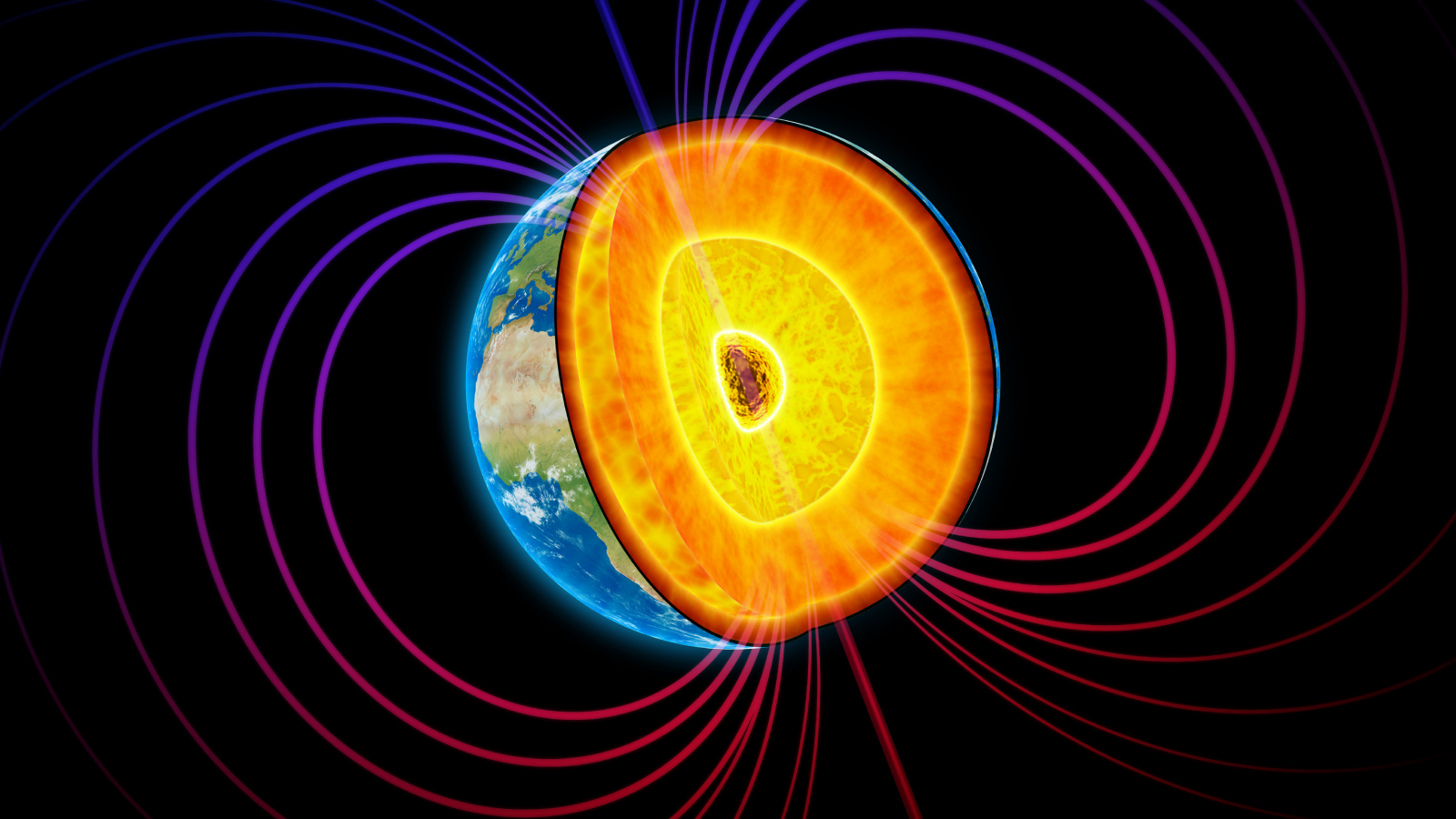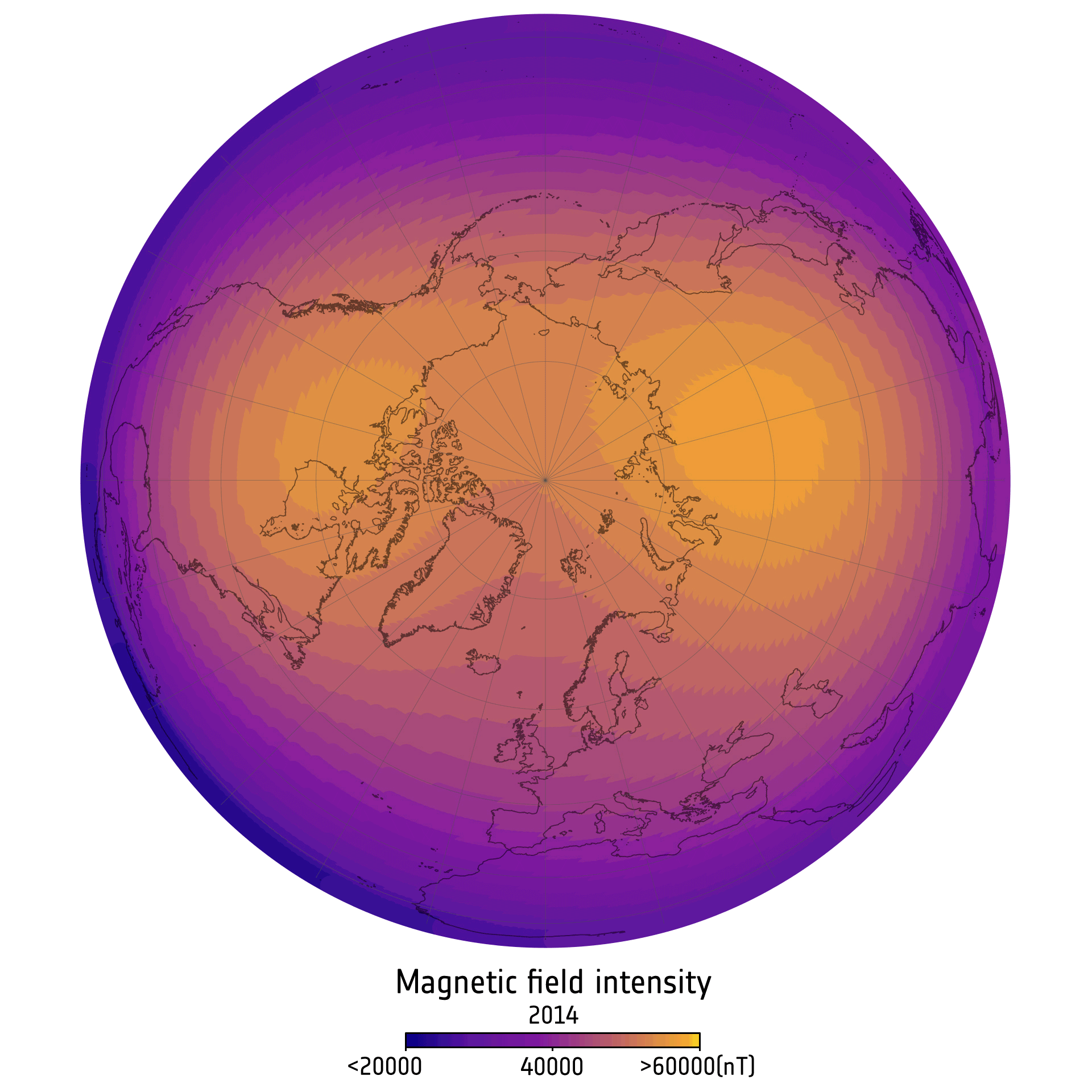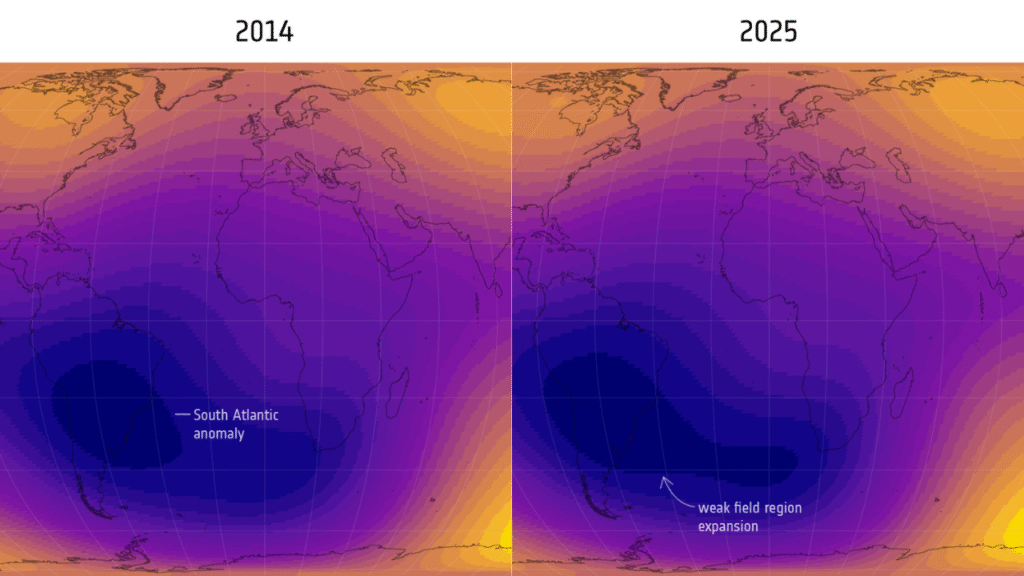Satellite data reveals that a region of weak Earth’s magnetic field in the South Atlantic Ocean has expanded in size since 2014.
This region, known as the South Atlantic Anomaly, has expanded to an area almost half the size of the European continent, with a bulge towards Africa, where it is declining most rapidly.
you may like
“The South Atlantic anomaly is not just a single block,” study lead author Chris Finley, a professor of geomagnetism at the Technical University of Denmark, said in a statement. “The changes towards Africa are different than near South America. Something special is happening in this region that is weakening the magnetic field more strongly.”
Researchers first discovered the South Atlantic Anomaly in the 19th century. Within its boundaries, the magnetic field radiating from Earth’s interior falls to an altitude of about 120 miles (200 km) above the planet’s surface. This is much lower than the average height of the magnetic field, which is about 400 miles (650 km).
This poses a threat to satellites and other spacecraft. Earth’s magnetic field protects planets and objects in low Earth orbit from charged solar particles and incoming X-ray and ultraviolet radiation, so spacecraft traveling over the South Atlantic Anomaly are more exposed to these effects. According to the statement, this could result in hardware malfunctions, damage, and even power outages.
Finley and his colleagues believe that the South Atlantic Anomaly is growing and spreading eastward because of strange magnetic flux at the boundary between Earth’s mantle and outer core (the planet’s layer sandwiched between Earth’s crust and inner core).

The Earth’s magnetic field is primarily generated by the Earth’s outer core. Earth’s outer core is a swirling ocean of molten iron located approximately 1,900 miles (3,000 km) below the Earth’s surface. The liquid iron dynamo generates an electrical current that induces a magnetic field that extends into the mantle and through Earth’s atmosphere, forming two giant rings that join near the poles.
Scientists have previously discovered that in some areas beneath the South Atlantic Anomaly, the magnetic field generated by the outer core is not going out, but is instead returning to the core. These patterns, known as reverse flux patches, can move and expand, which explains the growth of the South Atlantic anomaly over the past 11 years, Finlay said.
“We see one of these regions moving westward over Africa, which is contributing to the weakening of the South Atlantic anomaly.” [the magnetic field] in this region,” he added.

Scientists have discovered an unusual change in data from the European Space Agency’s (ESA) ongoing Swarm mission. The mission uses three identical satellites to measure magnetic signals originating from Earth’s interior and oceans. The data also revealed changes in magnetic field dynamics that appear to be stronger than average over Canada and Siberia since Swarm began observing in 2013.
Since 2014, the magnetic field over Canada has weakened slightly, while the field over Siberia has strengthened, a new study shows. The strong region over Canada has shrunk by an area roughly the size of India, while the strong region over Siberia has expanded by an area the size of Greenland. Researchers believe these changes are due to the recent shift of Earth’s north magnetic pole toward Siberia, but further monitoring is needed to see how the dynamics evolve.
“It’s really amazing to see the big picture of our dynamic Earth,” ESA’s Swarm mission manager Anja Stromme said in a statement. “The satellites are all healthy and providing great data, so we hope to extend that record beyond 2030.”
Source link

